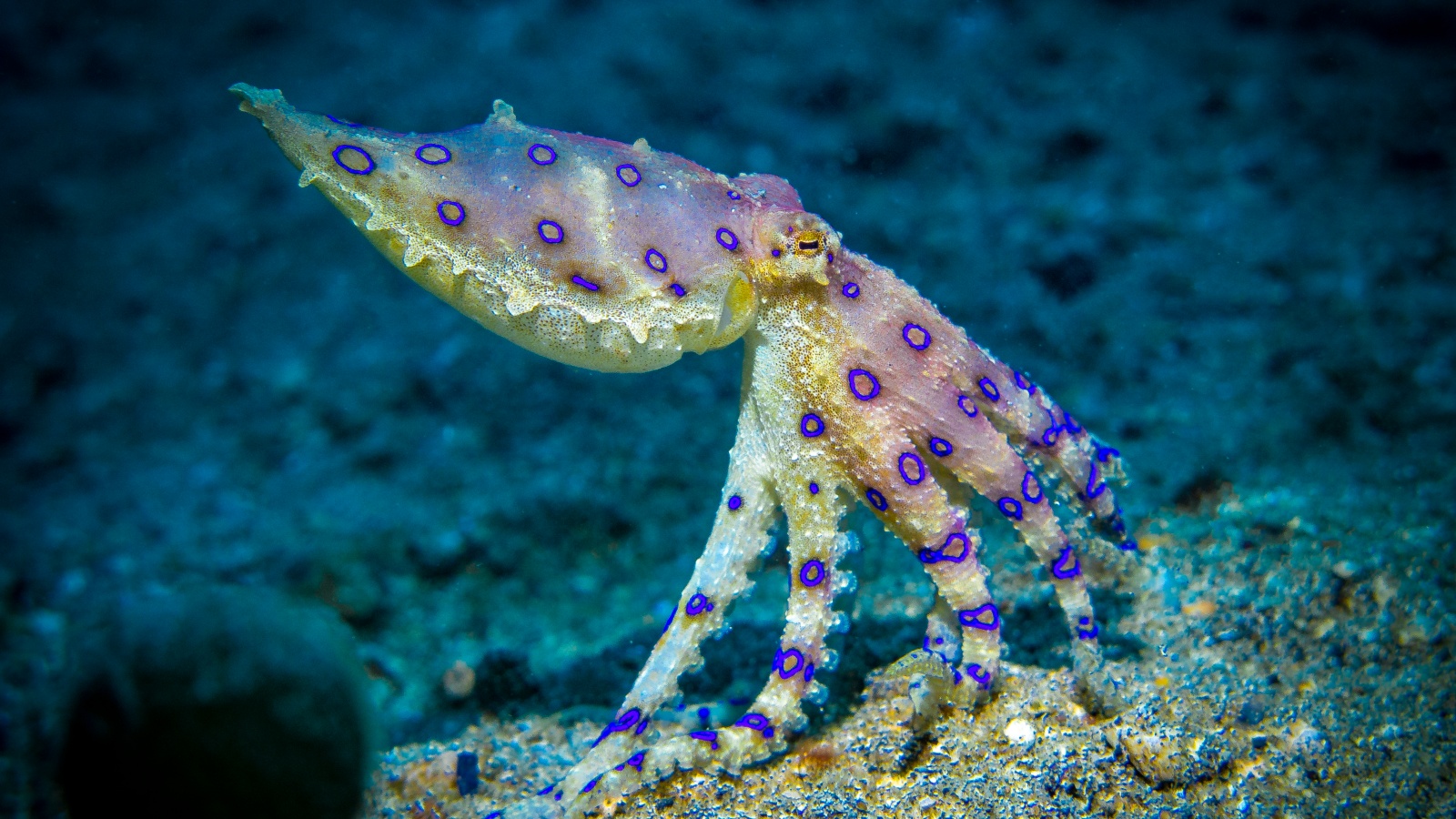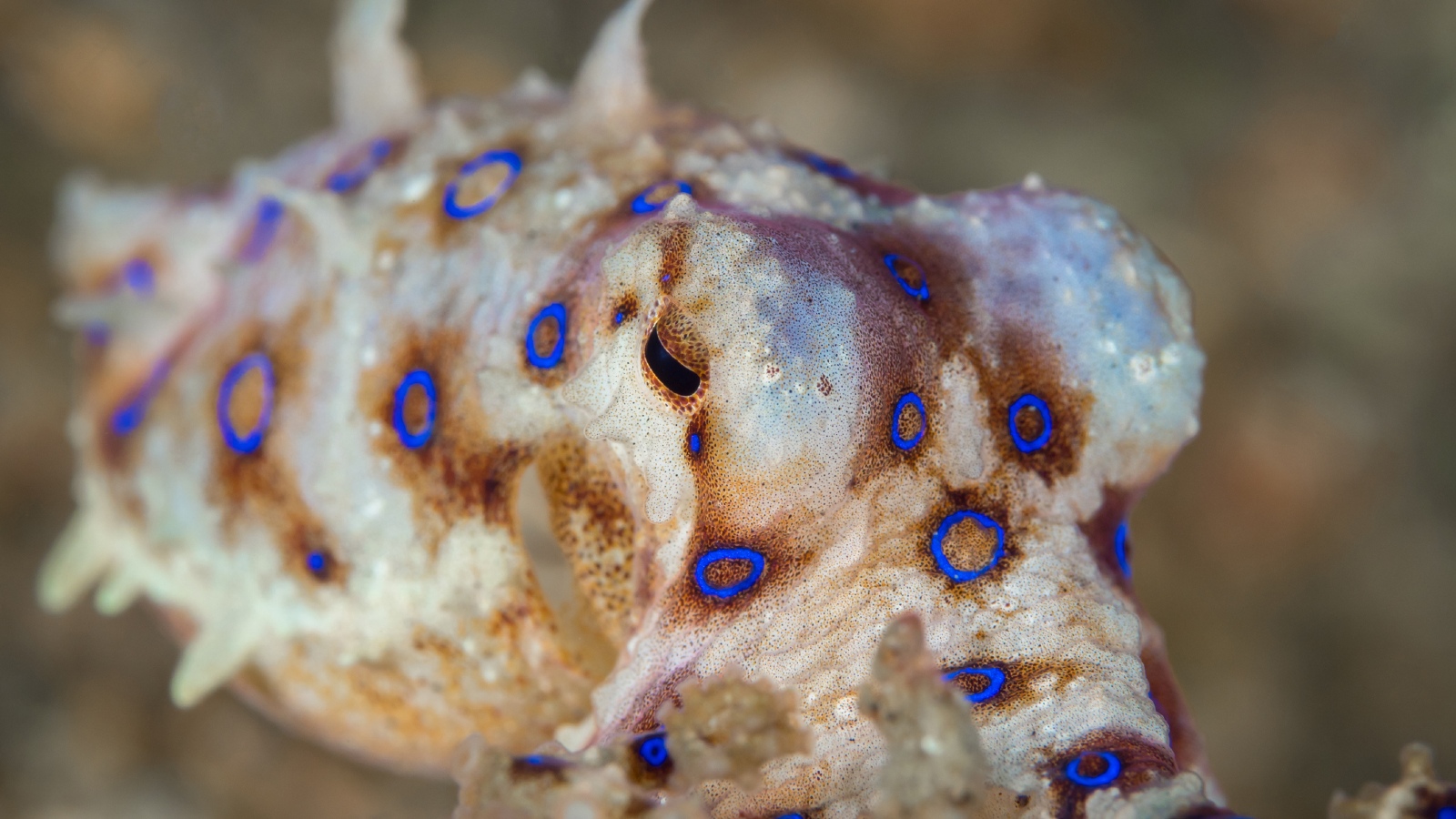
An Australian teenager had a lucky escape after being bitten by one of the world's most toxic animals, a blue-ringed octopus, after accidentally picking up the deadly cephalopod hiding in a shell. But this was not the only close call — he almost passed the tiny creature to a toddler, which could have been disastrous.
Blue-ringed octopuses are a group comprising four species: the greater blue-ringed octopus (Hapalochlaena lunulata), the southern blue-ringed octopus (Hapalochlaena maculosa), the blue-lined octopus (Hapalochlaena fasciata) and the common blue-ringed octopus (Hapalochlaena nierstraszi). These octopuses, which are all small enough to fit in the palm of your hand, contain tetrodotoxin — a powerful neurotoxin with no known antidote that can paralyze and kill humans within minutes, even in small doses.
Eighteen-year-old Jacob Eggington was swimming off Shoalwater Beach near Perth when he scooped up a shell, which, unbeknownst to him, contained an unidentified species of blue-ringed octopus, local news site PerthNow reported. Egginton placed the shell in his pocket and took it ashore to show his family. When he took it out of his pocket to show his infant niece, he spotted the blue-ringed octopus and dropped it to the floor.
"As soon as he saw the octopus, he yelled really loudly," Eggington's brother Joshua told 7NEWS Perth. "Just a few seconds later and the toddler would have been holding it."
After examining his leg, Egginton found a small painless bite and started to feel unwell. He was stretchered off the beach and taken to hospital, where he was treated for more than six hours. He was later released and is expected to make a full recovery.

Tetrodotoxin, which is also found in some newts, frogs and puffer fish, stops nerves from signaling to muscles by blocking sodium ion channels. It rapidly weakens and paralyzes muscles, including those needed to breathe, which can lead to respiratory arrest and death. Tetrodotoxin can start working quickly or take hours to paralyze muscles, so people can die anywhere between 20 minutes and 24 hours after the toxin enters the body, according to the Centers for Disease Control and Prevention (CDC).
There is no known antidote, so all healthcare practitioners can do is provide supportive care or use a ventilator if patients become unable to breathe, according to the CDC.
Blue-ringed octopuses do not create tetrodotoxin themselves. Instead, the toxin is produced by symbiotic bacteria that live in the creatures' salivary glands, according to the Australian Institute of Marine Science. Tetrodotoxin is found throughout the octopus's tissues, which makes them some of the few animals that are both poisonous and venomous. It also means that a person can receive a lethal dose just by touching the tiny cephalopods.
The octopuses' iridescent blue rings, which are given off by special color-changing organs, flash when they feel threatened to warn predators of their toxicity.
Despite being so toxic, only three people are known to have been killed by blue-ringed octopuses, according to WebMD. But there have been plenty of close calls.
In March, a woman survived being bitten twice on her abdomen by a blue-ringed octopus hiding in a shell she found while swimming on a beach near Sydney.
In 2006, a 4-year-old boy was almost killed after he was bitten by an octopus he picked up on a beach in Queensland. The boy vomited several times before developing blurred vision and then losing control of most of his muscles, according to a case report published in the journal Clinical Toxicology. After spending 17 hours on a ventilator, he eventually made a full recovery.
Experts warn that warmer waters during Australia's summer could raise the risk of more people encountering the toxic cephalopods. "They're very good at hiding so we wouldn't normally see them that often but they are there," Jennifer Verduin, an oceanographer at Murdoch University in Perth, told PerthNow.







